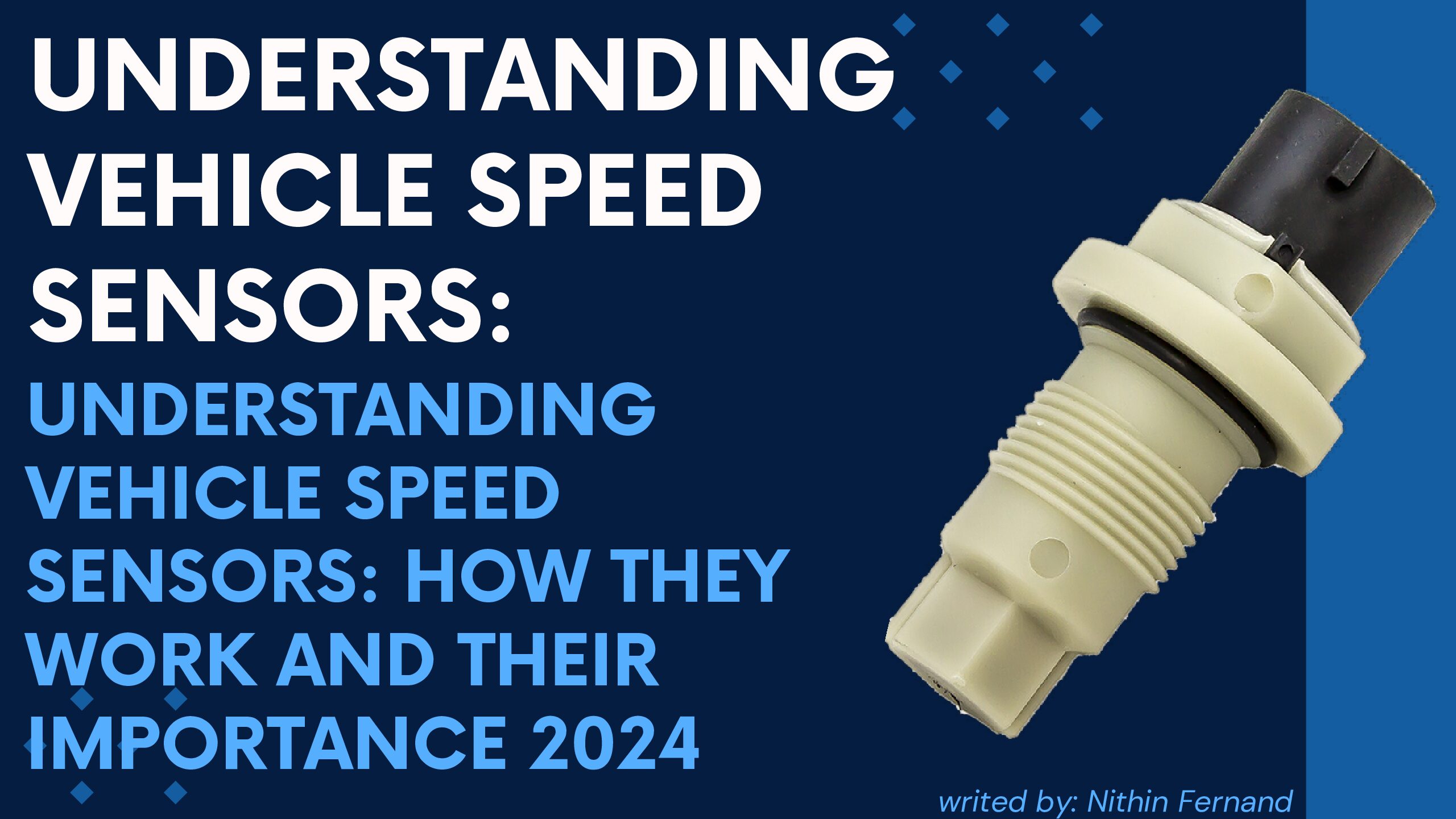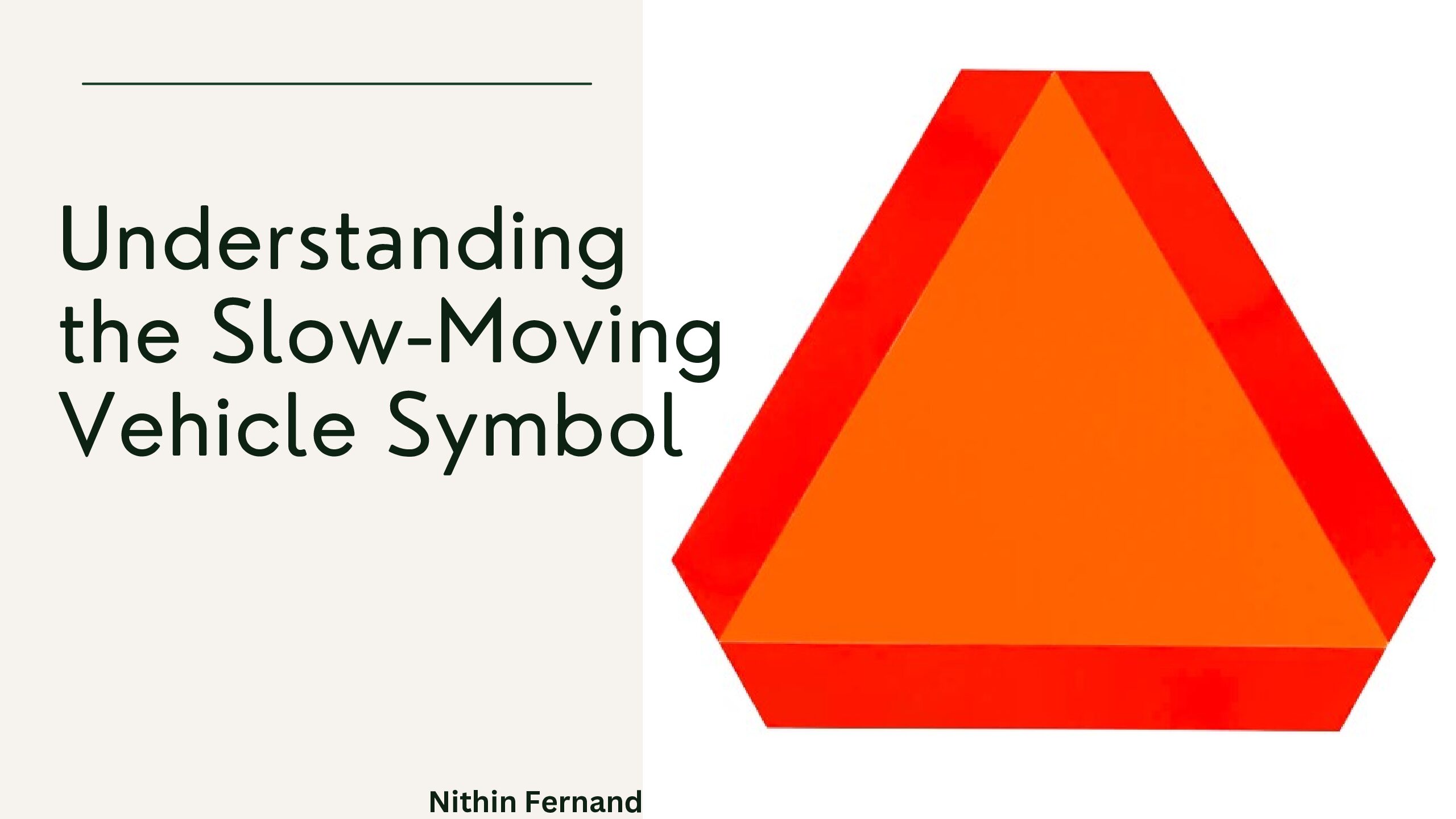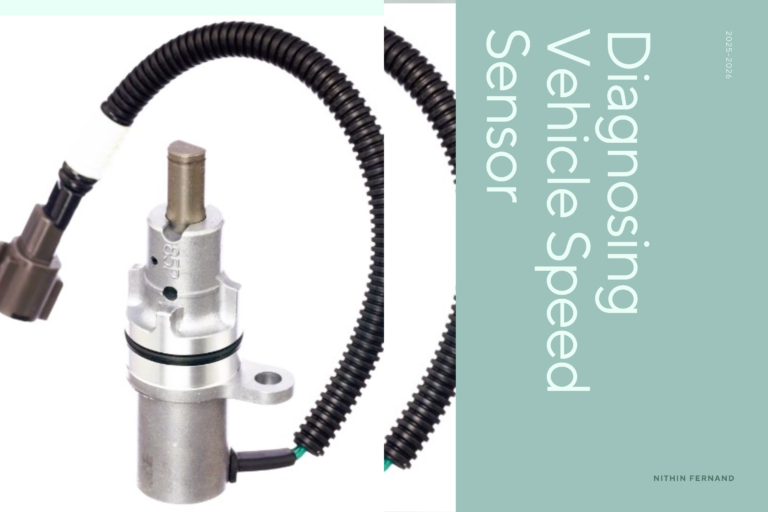Understanding Vehicle Speed Sensors: How They Work and Their Importance 2024
Introduction,
Vehicle speed sensors (VSS) are integral components in modern automobiles, playing crucial roles in providing essential information about the speed of a vehicle. These sensors contribute to the effective functioning of systems such as the engine control unit (ECU), anti-lock braking systems (ABS), and transmission control systems, ensuring smoother and safer rides. This article delves into the mechanics, applications, and significance of vehicle speed sensors in today’s automotive industry.
Vehicle speed sensors are pivotal in the modern automotive landscape, significantly impacting safety, performance, and efficiency.
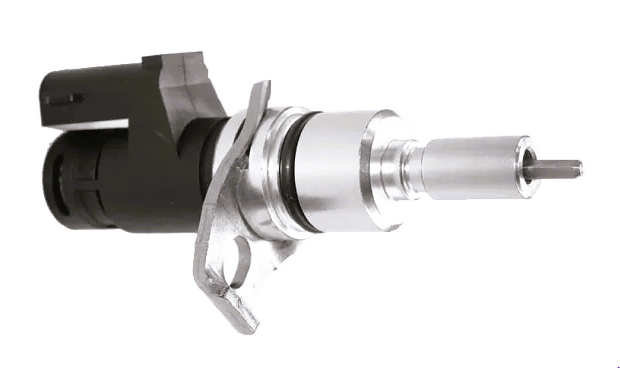
In this article, we look at the mechanics, applications and importance of vehicle speed sensors in the automotive industry.
Table of Contents
What is a Vehicle Speed Sensor?
A vehicle speed sensor is a device that transmits information about the speed of a vehicle. By sending signals to the car’s electronic control units, the VSS helps in managing various functions such as fuel injection timing, transmission shift points, and ignition timing, all of which are central to a vehicle’s performance and efficiency.
Types of Vehicle Speed Sensors
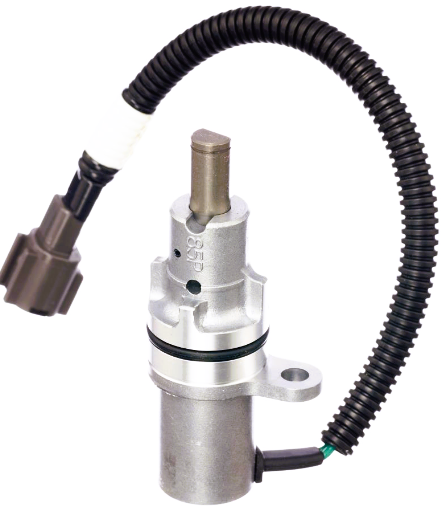
1.Magnetic Inductive Sensors:
These are among the most common VSS types. They rely on a toothed gear wheel typically located at the output shaft in the transmission. As the wheel turns, it generates a magnetic field whose changes are detected and converted into electrical signals that measure the speed.
2.Hall-Effect Sensors:
These sensors utilize a Hall-effect transistor to detect changes in a magnetic field. When a ferrous metal object, such as a gear tooth, disrupts the field, it triggers the Hall-effect sensor to send a digital signal representing speed.
3.Optical Sensors:
Though less common in automotive applications, optical sensors work by using light to detect wheel rotation speed. Such sensors have a perforated disk placed in the path of a light-emitting diode (LED), with rotations causing interruptions or passes of light that correspond to speed measurements.
How Vehicle Speed Sensors Function
Vehicle speed sensors measure rotational speed, usually at the transmission or electronically through the ABS system. The generated signal is either in the form of a digital pulse or analog signal, which the vehicle’s ECU or other control units interpret. These translated signals are essential for several critical automotive functions, such as:
1.Engine Management:
VSS data helps determine optimal fuel injection and ignition timing, influencing the vehicle’s fuel efficiency and emissions.
2.Transmission Control:
By knowing the car’s speed, the transmission control module can decide the precise moment to shift gears, enhancing drive smoothness and fuel economy.
3.Anti-lock Braking Systems (ABS):
Speed sensors send the wheel speed data to the ABS system, helping prevent wheel lock-up during intense braking, thus ensuring vehicle stability and control.
Importance of Vehicle Speed Sensors
4.Fuel Efficiency and Emissions Control:
Accurate speed data helps fine-tune engine performance parameters, minimizing fuel consumption and emission rates.
5.Safety Features:
Modern safety systems such as ABS and electronic stability control (ESC) rely heavily on VSS data to maintain vehicle control under various driving conditions.
6.Troubleshooting and Diagnostics:
Speed sensors are invaluable for diagnostic purposes. They can indicate issues related to the transmission or anti-lock brake systems, making it easier to troubleshoot and address mechanical problems.
7.Enhanced Driving Experience:
By ensuring proper gear shifts and engine responsiveness, speed sensors contribute to a smoother and more comfortable driving experience.
Common Symptoms of a Failing Vehicle Speed Sensor
Like any mechanical or electronic component, vehicle speed sensors can fail. Recognizing the signs of failure is crucial for maintaining vehicle safety and performance. Common symptoms include:
Diagnosing Vehicle Speed Sensor Symptoms and Solutions
Nithin Fernand
1.Irregular Speedometer Readings:
The speedometer may become erratic or stop working altogether.
2.Transmission Issues:
Delays in shifting or unusual gear patterns can indicate a faulty VSS.
3.ABS Warning Light:
Since VSS data is integral to ABS functionality, a malfunctioning sensor may trigger the ABS warning light.
4.Reduced Engine Power:
Some vehicles may enter “limp mode,” restricting engine power to prevent damage.
Troubleshooting and Replacing a Vehicle Speed Sensor
Troubleshooting a VSS typically involves scanning the vehicle’s computer system for error codes and testing the sensor’s electrical output using a multimeter. If a replacement is necessary, the process generally includes:
1.Locating the Sensor:
Reference the vehicle’s manual to find the VSS, usually located near the drive shaft or transmission.
2.Disconnecting the Electrical Connector:
Safely disconnect the sensor’s connections before removing it.
3.Removing and Replacing the Sensor:
Unscrew the faulty sensor and replace it with a new unit, ensuring it matches the original specifications.
4.Reconnecting All Components:
Reattach the electrical connectors and test the new sensor to confirm proper installation.
Advances in Vehicle Speed Sensor Technology
As technology progresses, so does the sophistication of vehicle speed sensors. Innovations include:
1.Integration with Advanced Driver-Assistance Systems (ADAS):
Modern sensors are part of systems that support features like adaptive cruise control and automated braking.
2.Real-time Data Processing:
Newer sensors provide faster data transfer and processing capabilities, improving response times for vehicle systems.
3.Durability and Miniaturization:
Advances in materials have led to more durable sensors, capable of withstanding extreme temperatures and conditions, while miniaturization efforts have helped integrate these components into compact spaces.
4.Wireless Technologies:
Development in wireless communications may pave the way for sensors that communicate without traditional wiring, simplifying installation and maintenance.
Conclusion
Vehicle speed sensors are pivotal in the modern automotive landscape, significantly impacting safety, performance, and efficiency. By converting physical speed into usable data, these sensors enable a host of vehicle functions that enhance the driving experience and vehicle reliability. As technological advances continue to unfold, the evolution of speed sensors will likely integrate even deeper into vehicle systems, underscoring their importance in the automotive world.
Understanding and maintaining these sensors can lead to safer driving, better fuel economy, and prolonged vehicle life. Whether you are a professional technician or an automotive enthusiast, appreciating the nuances of vehicle speed sensors is essential to ensuring top-tier vehicle performance.

